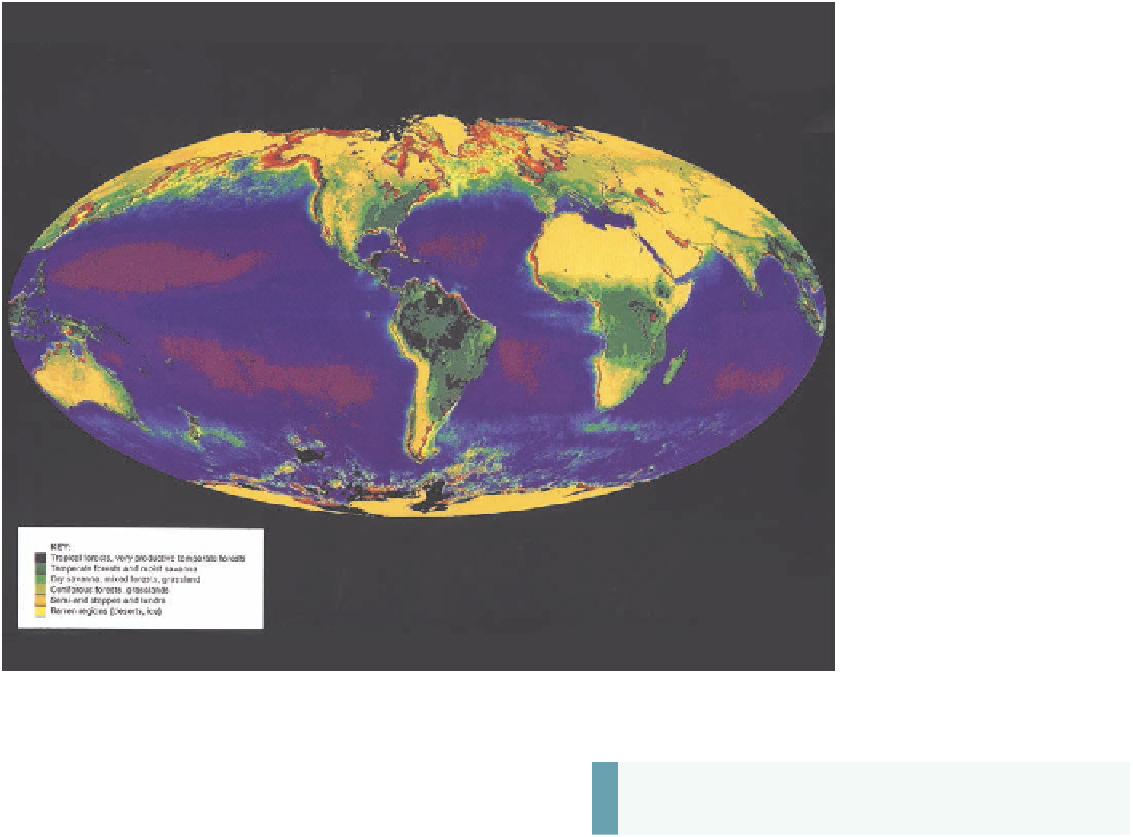Geoscience Reference
In-Depth Information
Figure 10.5 The global bio-
sphere.
This composite im-
age was acquired by the NIM-
BUS-7 and AVHRR satellites
over a period of eight years.
It shows the geographic dis-
tribution of potential global
biomass.
than 60,000 images collected by a sensor on the NIMBUS-7
satellite. This sensor measured the distribution and amount of
phytoplankton, which are microscopic plants that grow in the
upper part of the ocean where the Sun penetrates. Red and or-
ange colors represent high concentrations of phytoplankton,
whereas yellow to violet colors reflect progressively lower con-
centrations. The land vegetation image is a composite collected
during 15,000 orbits by the Advanced Very High Resolution
Radiometer (AVHRR). This sensor measured radiation from the
land surface, which is then used to estimate vegetation produc-
tion. The dark green areas are rainforests that have the highest
growth potential, whereas the lighter greens reflect the potential
vegetation growth in other tropical and subtropical forests, as
well as midlatitude forests and farmland. The lightest shades
of yellow represent deserts where little growth potential exists.
Snow and ice-covered regions have no vegetation potential.
KEY CONCEPTS TO REMEMBER ABOUT
ECOSYSTEMS AND PHOTOSYNTHESIS
1.
Biogeography is a subdiscipline of physical geography
that focuses on the geographical distribution of living
organisms and the environmental factors that influence
these patterns.
2.
Ecosystems are communities of organisms that interact
in interdependent ways.
3.
The major components of ecosystems are abiotic
factors, autotrophs, heterotrophs, and decomposers.
4.
Photosynthesis is the process through which solar
radiation is converted to chemical energy in plants.
Photosynthesis and Respiration
Now that the process of photosynthesis has been examined
in a static way, the concept can be reinforced by watching it
in animated form. To do this, go to the
Geo Media Library
and select
Photosynthesis and Respiration
. This animation
nicely illustrates the various pathways involved in the photo-
synthetic process. After you view this animation, be sure to
answer the questions at the end to test your understanding of
this concept.




















